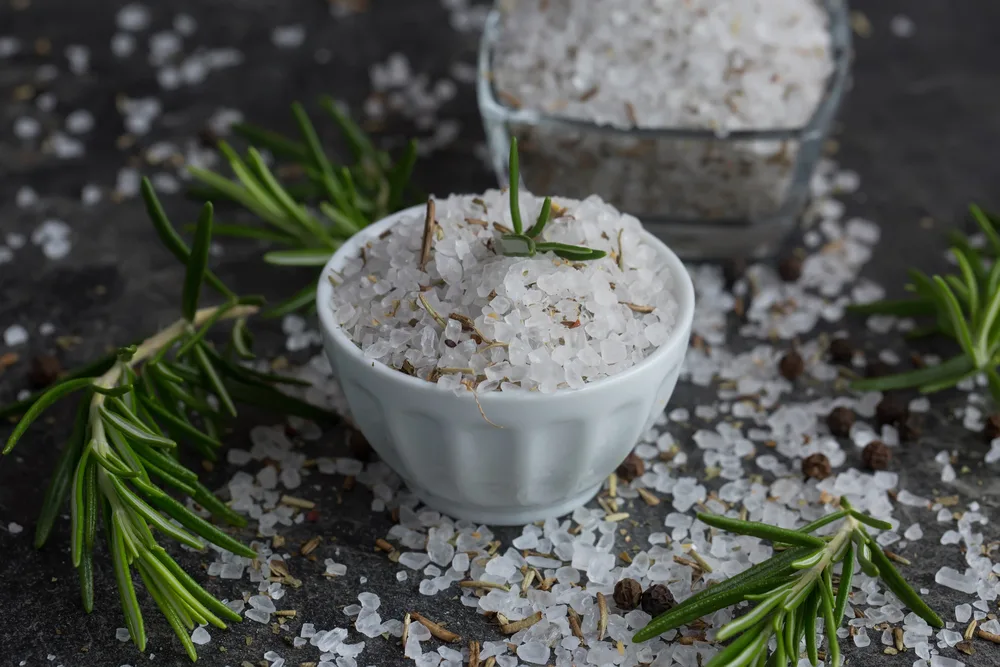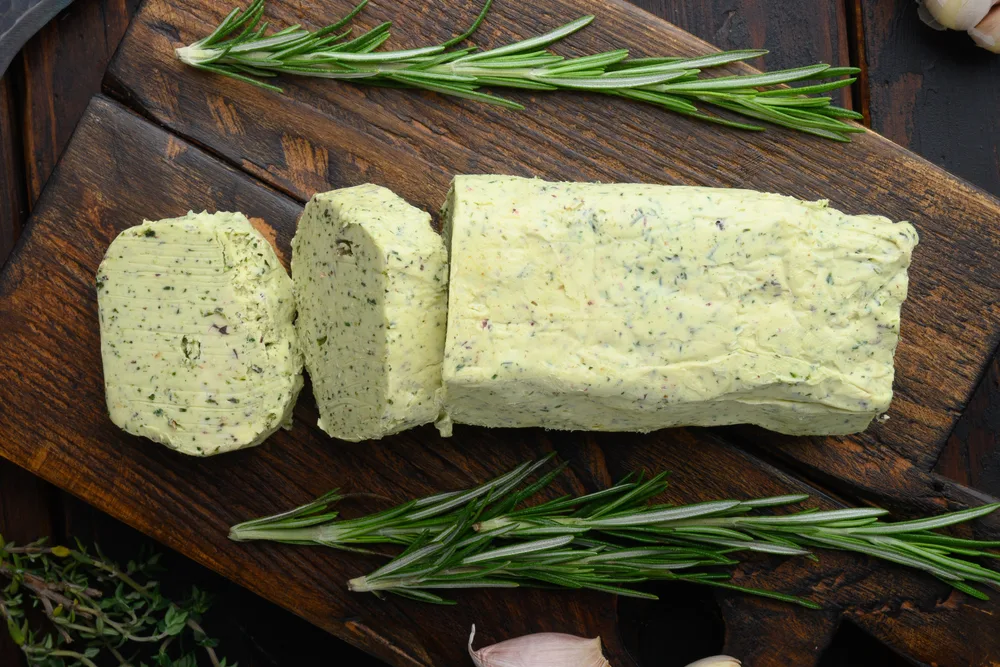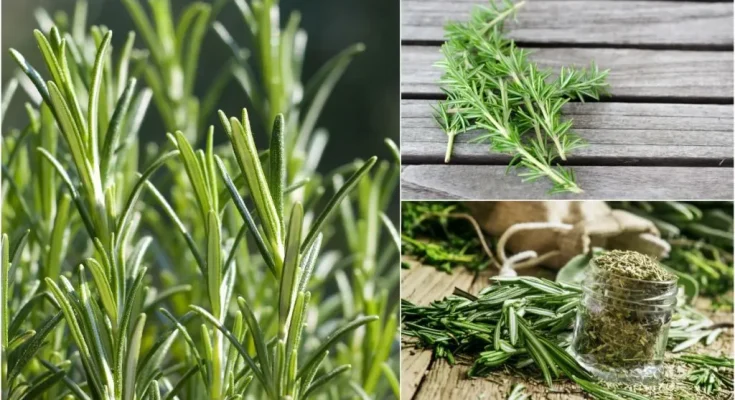Exuding that telltale sweet piny fragrance, rosemary is an easy plant to grow that demands very little from the home gardener.
And because a single plant can grow at least four feet tall and wide, rosemary will provide an abundance of sprigs for you throughout the growing season.

These are our favorite ways to use it:
In the Pantry…
1. Rosemary Olive Oil

Rosemary infused olive oil is a wonderful way to preserve your bounty of fresh sprigs. Drizzle it over meats and vegetables, mix in in with salad dressings, use it as a bread dip, or when pan frying for a more flavorful sauté.
You’ll need:
- 1 cup of extra virgin olive oil
- ¼ cup of fresh rosemary leaves
Rinse rosemary sprigs in water and allow them to dry completely before stripping the leaves from the woody stem. To help release the scent and oils, slightly bruise the rosemary leaves with the back of a spoon.
With a saucepan on the stovetop, add the rosemary leaves and pour olive oil over them. Warm the oil on low heat for 5 to 10 minutes, taking care not to allow the mixture to reach a simmer.
Leaving the pot on the burner, turn off the heat. Allow the herbs to imbue the oil for a least one hour. The longer you let it infuse, the more intense the rosemary will be.
Strain the oil into a clean glass jar. Secure the lid and store in a cool, dry cupboard for 2 to 3 months or in the refrigerator for 6 months.
2. Rosemary Sea Salt

It’s so easy to season salt with a little rosemary!
You’ll need:
- 3 cups of sea salt
- 1 cup of fresh rosemary leaves
Combine sea salt and rosemary leaves in a jar and stir well. Screw on the lid and let it marinate for about two weeks before using.
3. Rosemary Butter

This herbed butter is amazing spread on crackers, breads, and even mashed potatoes!
You’ll need:
- 4 tablespoons of butter, room temperature
- 1 tablespoon of fresh rosemary, chopped
- 1 clove of garlic, minced
- 1 pinch of black pepper
Cream butter until softened. Blend in rosemary, garlic, and pepper. Use parchment or wax paper to shape into a log, and wrap it up tightly. Place in the fridge until firm. Slice and serve.
4. Rosemary Sandwich Spread
Heighten the average turkey club or BLT with this creamy spread. Feel free to substitute Greek yogurt with mayonnaise if you prefer.
You’ll need:
- 1 cup of Greek yogurt
- 3 sprigs of fresh rosemary, stem removed and finely chopped
Whisk together rosemary and Greek yogurt in a container with a lid. Cover and place in fridge. Allow to marinate for 3 days before spreading on your sandwiches.
5. Apricot Rosemary Jam

Rosemary pairs up nicely with many other types of jam making fruits, like peaches, strawberries, blackberries, and rhubarb. This apricot rendition, though, is both savory and sweet, and can be enjoyed equally as a meat marinade or spread on toast.
6. Rosemary Skewers

Don’t toss out your rosemary stems! Next time you make kebabs, use the rosemary stems to skewer your meats and veggies to add a delicious herbal aroma to your grilled foods.
In the Kitchen…
7. Sriracha and Rosemary Chicken
All things crispy, creamy, savory, and spicy, these boneless chicken breasts are marinated in Greek yogurt, sriracha hot sauce, chopped rosemary, and minced garlic for a few hours before being baked (and then broiled) to crisp perfection. Yum!
8. Garlic Rosemary Steak
Make up some rosemary olive oil ahead of time for this succulent steak recipe, fried up in a heavy skillet with garlic oil and coarse sea salt.
9. Roasted Salmon on Rosemary

A genius way to imbue any kind of fish fillet with the sweet piny taste of rosemary! The fish is first seared and seasoned with salt and pepper, then placed atop a bed of fresh rosemary sprigs in a baking dish. Top with lemon slices and some chopped rosemary and bake for 10 minutes.
10. Rosemary Root Vegetables
A super simple way to jazz up your roasted veggies, chopped turnip, parsnip, sweet potato, rutabaga, and Brussels sprout are tossed in olive oil, rosemary, and garlic and baked for 20 minutes.
11. Hasselback Potatoes with Rosemary and Garlic

Crispy on the outside with a mashed potato like creaminess in the center, hasselback potatoes are thinly sliced – but whole – taters baked in the oven. There are many iterations of the hasselback, but this recipe includes stuffing garlic and rosemary between the slits, with a generous drizzling of olive oil.
12. Rosemary Garlic Focaccia

A medley of garlic, thyme, and rosemary, this chewy focaccia bread is divine for sandwiches, soups, and even all on its own.
Get the recipe from Inspired Taste.
13. Rosemary Drinks

A sprig of rosemary is all it takes to add a floral flavor to many drinks recipes. A gin and tonic can always be improved with a sprig of rosemary and a slice of grapefruit. Plain old water can be made more interesting with a couple of sprigs of rosemary.
Why not try making a rosemary mojito for a winter twist on the popular mint mojito.
Around the Home…
14. Mosquito Repellent

Keeping mosquitoes away can be as simple as tossing some rosemary springs on the hot coals in your barbecue. But for something longer lasting, make a few insect repelling mason jar luminaries before your next cook out.
15. Uplifting Potpourri
The combination of rose petals with orange, lemon, lavender, and rosemary makes this dried potpourri emit a lovely citrusy, herbal, woody, and floral scent.
16. Rosemary Wreath

Welcome visitors to your home with the glorious smell of rosemary! All this super easy craft requires is a wreath frame, floral wire, and an overabundance of rosemary.
17. Rosemary Dryer Sachets
In lieu of single use, chemically laden dryer sheets, you can scent your clean clothes naturally with the power of rosemary and other herbs.
You’ll need:
- Muslin sachets (like these)
- 1 cup of dried rosemary
Fill sachets with rosemary and other pleasant smelling herbs like lavender, mint, chamomile, and lemongrass. Close the drawstrings tightly – you don’t want these popping open during the drying cycle.
These sachets can be reused several times before they begin to lose their aroma, simply squeeze the bag to help release the fragrance before tossing them in the dryer.
18. Orange Rosemary Salt Scrub
Exfoliate your skin with this all natural recipe. To make, combine salt, orange zest, rosemary leaves, and olive oil into a food processor and pulse. Use it on your hands, feet, and anywhere else that needs a bit of rejuvenating.
Get the DIY from Oleander + Palm.
19. Rosemary Facial Toner
This easy peasy beauty recipe will help shrink pores and cleanse your skin, and you can throw it together in just five minutes. All you need to do is make a rosemary water reduction on the stovetop and add some apple cider vinegar.
Get the DIY from Homemade for Elle.
20. Rosemary Hair Tonic
Cleanse and clarify your hair and scalp, all while making your locks smelling amazing!
You’ll need:
- 5 cups of water
- 3 to 4 fresh rosemary sprigs
Bring water to a boil on the stovetop. Turn off and remove from heat. Add the rosemary sprigs, cover the pot, and allow it to steep for at least 20 minutes.
After the water has cooled, strain out the rosemary and transfer the liquid to a container or spray bottle. To use, pour it over your scalp and work it into your hair as a final rinse in the shower or spritz wet or dry hair for a leave-in conditioner.
Keep your sealed bottle in the fridge and use it within one week.
21. Rosemary Christmas Tree

Due to rosemary’s coniferous qualities, it makes for a wonderful and aromatic miniature Christmas tree. Ensuring your plant survives the holidays will, however, take some careful planning.
To maximize the chances of success, grow one or more rosemary plants in 10-inch containers during spring and summer, allowing the root system to become well established. Every 4 to 6 weeks, prune rosemary into a triangular tree shape. Trim the tree until the just before the first frost of the year, since its vigorous growth tends to ebb come winter.
In its native Mediterranean climate during winter, rosemary would typically experience full sun and cooler daytime temperatures (around 60°F) with nights that are just above freezing. So to replicate these conditions, leave rosemary outdoors and bring it inside when frost is expected, placing it in the sunniest and coolest room in your home. When temperatures rise above 30°F, bring it back outdoors.




Nice post. I learn something totally new and challenging on websites